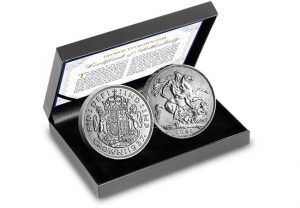Posts Tagged ‘crown coin’
The First and the Last: George VI’s two Crown coins
George VI stands out as one of the most popular and interesting monarchs in British history.
After the shock abdication of his brother, he courageously led the country through World War Two and became a national hero. His story has since been famously portrayed in the Oscar winning 2010 film, The King’s Speech, and the popular TV series The Crown.
Just as interesting as his reign itself, were the coins that were issued during his 16 years on the throne. Only two Crown coins were issued, but both are extremely significant in British numismatic history and mark important changes for our coinage…
1937 Coronation Crown
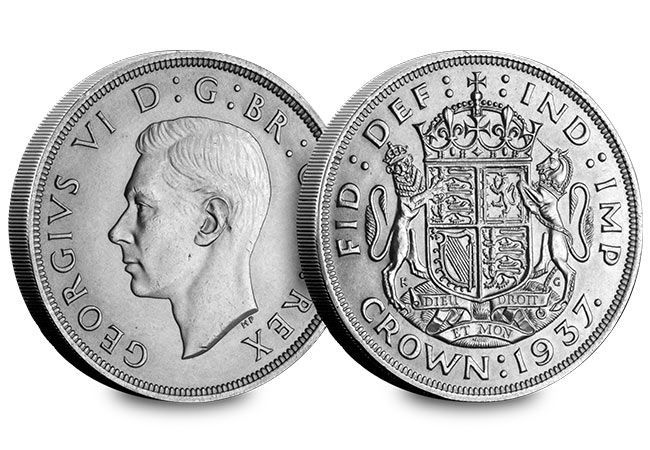
It has been a tradition held by many British monarchs to issue a Crown coin in their coronation year, however, this tradition was a difficult one to maintain for George VI’s coronation in 1937.
That’s because it was decided that George VI’s Coronation would be on the same day that was planned for his brother Edward VIII before his infamous abdication. With a race against the clock to strike a coin for the Coronation, a new portrait was hurriedly prepared and quickly engraved before the ceremony.
What makes this coin so important for collectors is that it was the last ever Coronation Crown struck in Silver by The Royal Mint.
1951 Festival of Britain Crown
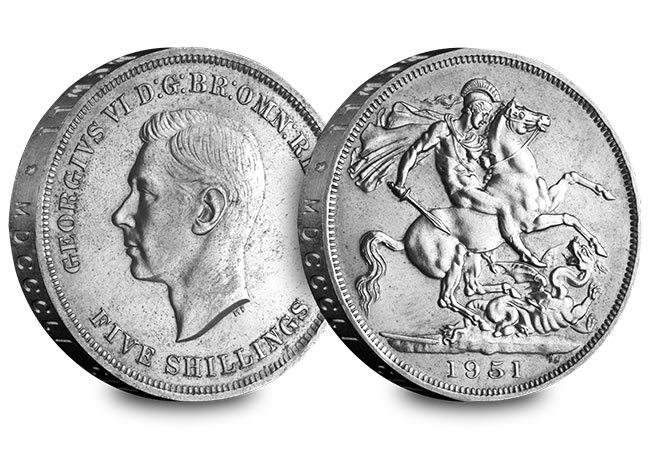
The only other Crown coin issued during the reign of George VI was struck in 1951 to mark the Festival of Britain. To commemorate this hugely popular event, The Royal Mint decided to issue a brand new coin.
This specially issued coin was the first ever Crown struck in cupro-nickel and was the first Crown issued to commemorate a non-royal event.
Since this coin, The Royal Mint have issued many Crowns commemorating non-royal events of national significance and in doing so have created one of the most popular numismatic collecting themes internationally. This coin marks the start of this famous collecting trend that has transformed commemorative coins in Britain and across the world.
Both of these significant coin issues are now over 65 years old and as a result are becoming increasingly difficult to acquire.
However, I would consider them key coins for any Royal or 20th century coin collection because of the popular monarch that issued them and the important moments they mark for British numismatic history.
If you’re interested…
We have a limited number of George VI Crown Pairs available for collectors. However, with such limited stock available I suggest you act now if you want to add these two extremely significant coins to your collection.
Take a look at the history of the British crown coin…
Discover the journey of the crown coin and how it became the UK’s flagship £5 commemorative coin…
For more information about the history of the crown coin click here.
Click here to download your own printable version of The History of the Crown Coin.
The history of the British crown coin…
Today crown coins are usually issued to mark special occasions of national importance and are intended to be commemoratives rather than ordinary circulation coins. But they have seen some significant changes over the decades...
The British crown first appeared during the reign of Henry VIII and was struck from gold. Issued in 1544, the ‘Double rose’ as it came to be known had a twin rose deign topped with a large crown on the obverse.
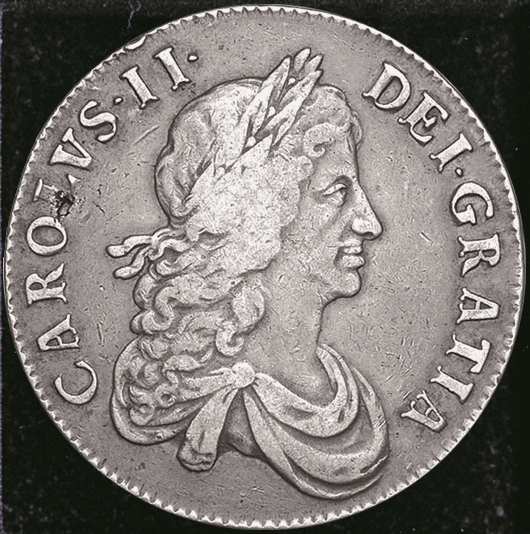
Charles II Crown
Crown coins weren’t struck regularly from silver until 1662 under Charles II – which is when all the previous denominations of gold coins were replaced by milled guineas.
Silver crown coins enter circulation…
The crown issued for circulation that year marked the end of hammered coins as the Royal Mint transferred to mill striking permanently after centuries of working by hand.
At this point the crown started to look more familiar, and it has remained roughly the same size (almost 30mm in diameter) to the present day.
The coins’ generous dimensions leant it an air of importance, and crowns were usually struck in a new monarch’s coronation year. This was true of every monarch since King George IV up until the present monarch in 1953, with the single exception of King George V.
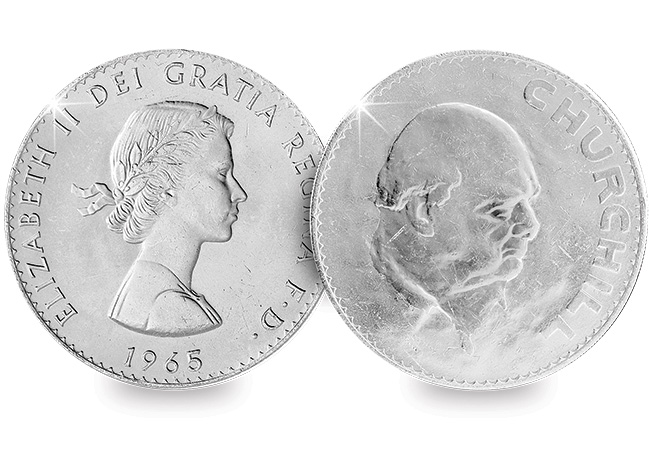
The 1965 Churchill Memorial Crown – the first crown coin to feature a non-monarch
With its large size, many of the later coins were primarily commemoratives. The 1965 issue carried the image of Winston Churchill on the reverse, the first time a non-monarch or commoner was ever placed on a British coin, and marked his death.
Decimalisation arrives…
Traditionally crowns had a face value of five shillings, but after decimalisation on 15th February 1971 the crown became the 25p coin – one of the UK’s most unusual denominations.
The 25p pieces were issued to commemorate significant events, with one of the earliest issues being the Silver Wedding Anniversary of Queen Elizabeth II and Prince Phillip in 1972.
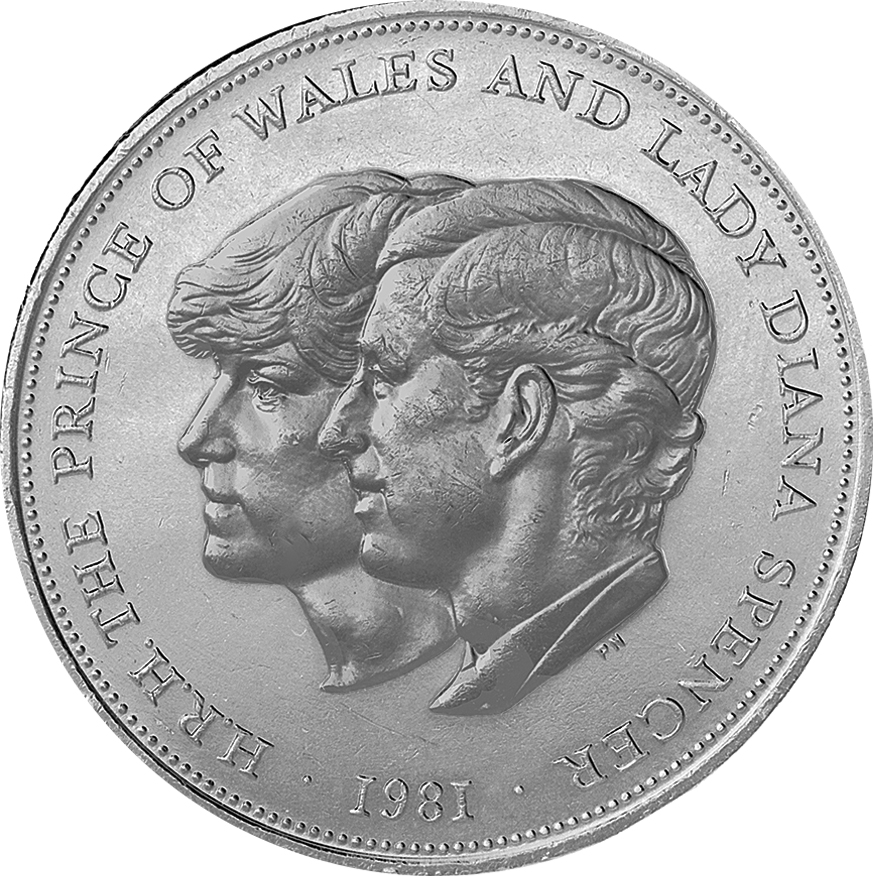
1981 Charles and Diana Wedding Crown
In 1980 an issue was authorised for the 80th birthday of Queen Elizabeth The Queen Mother; and, in 1981, the coin was issued to celebrate the marriage of Charles, Prince of Wales and Lady Diana Spencer. All of these issues were struck in large mintages, in plastic cases, and in cupro-nickel. However, in addition to this, limited numbers of collectors’ coins of these modern issues were struck to proof quality separately by the Royal Mint in sterling silver.
Legal tender changes from 25p to £5…
The legal tender value of the crown remained as 25p until 1990 when their face value was increased to £5 in view of its relatively large size compared to other coins.
Since the value increased to £5 in 1990 it quickly became recognised as the nation’s flagship commemorative coin and remained possible to buy these coins through banks and post offices (as well as the Royal Mint, The Westminster Collection and other distributors) in circulating quality right up until 2009.
Farewell to the face value £5 coin…
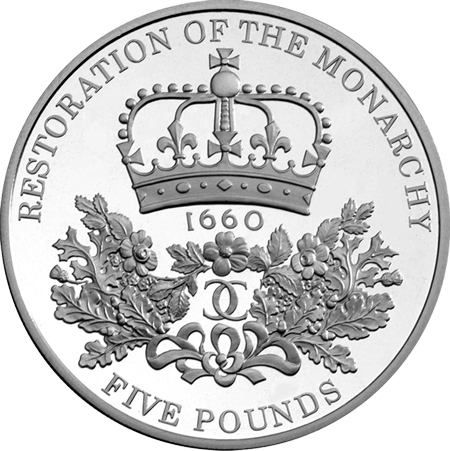
The last ever £5 for £5 crown coin – 2010 The Restoration of the Monarchy
£5 coins continued to be available for a couple more years at face value in brilliant uncirculated quality. But sadly, today the Royal Mint only releases £5 coins in presentation packs selling for £13.
The British crown has undoubtedly seen many changes throughout the years, from metals, size and denomination – it certainly is a coin with an interesting history.
What’s been the most significant change for you? Leave a comment below.
Sign the petition to bring back the £5 for £5 by clicking here
Discover how you can be one of just 1,000 collectors able to own the new 2016 UK Queen’s 90th Birthday £5 for £5 – click here.

